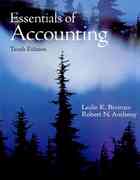Question
After graduating from college, you started a company that manufactures and sells flu vaccines at a discount to underdeveloped countries' governments. You decided to use
After graduating from college, you started a company that manufactures and sells flu vaccines at a discount to underdeveloped countries' governments. You decided to use your Operations Management skills to optimize the manufacturing process and reduce production costs. The optimized process will enable you to offer vaccines at a lower price than your competitors.
After some serious process optimization, you reduce the vaccine production costs to $6 per dose (a "dose" is a vaccine for one person). However, because of capacity constraints, your company must manufacture the vaccine before the flu season. During the flu season, you sell doses to governments for $20 per dose. The selling price is significantly lower than other suppliers in the market but is sufficient to cover your fixed costs such as salaries etc.
While the manufacturing process is optimized, you realize that you can do nothing about the world's uncertainty, where sometimes the flu season is mild and not all doses that are produced are sold - if a dose is not sold during the season then it is worthless and must be thrown out.
For the forthcoming flu season, your forecasts for your vaccine's demand follows the Normal distribution with a mean of 50 million doses and a standard deviation of 15 million (thus
= 50 million and
= 15 million).
Question 1
Find the profit-maximizing number of doses that you should manufacture (i.e. find your newsvendor ordering quantity). What is your expected profit in this case?
Question 2
New regulation may come out soon. It stipulates that, for sanitary and environmental reasons, vaccine manufacturers must hire a specialized agency to assist with the disposal of unsold vaccines. The disposal fee is $1 per unsold vaccine. How would this change the optimal order quantity? Calculate the optimal order quantity and expected profits in this case.
Question 3
In 2012, there was a huge shortage of flu vaccines in the world. To improve public health, the World Health Organization (WHO) is considering incentives for your company to encourage higher levels of vaccine production.
In particular, WHO would like you to make enough vaccines so that the probability of not meeting the demand is 20%. One possible incentive is to purchase all unused doses of vaccine (a 'buy-back' program). For example, if you manufacture 50 million doses and sell 40 million, WHO will buy back each of the remaining 10 million doses for some price. There are no disposal fees in this case.
What price per unit must WHO offer for each unused dose to best incentivize you to meet the 20% goal?
Step by Step Solution
There are 3 Steps involved in it
Step: 1

Get Instant Access to Expert-Tailored Solutions
See step-by-step solutions with expert insights and AI powered tools for academic success
Step: 2

Step: 3

Ace Your Homework with AI
Get the answers you need in no time with our AI-driven, step-by-step assistance
Get Started


